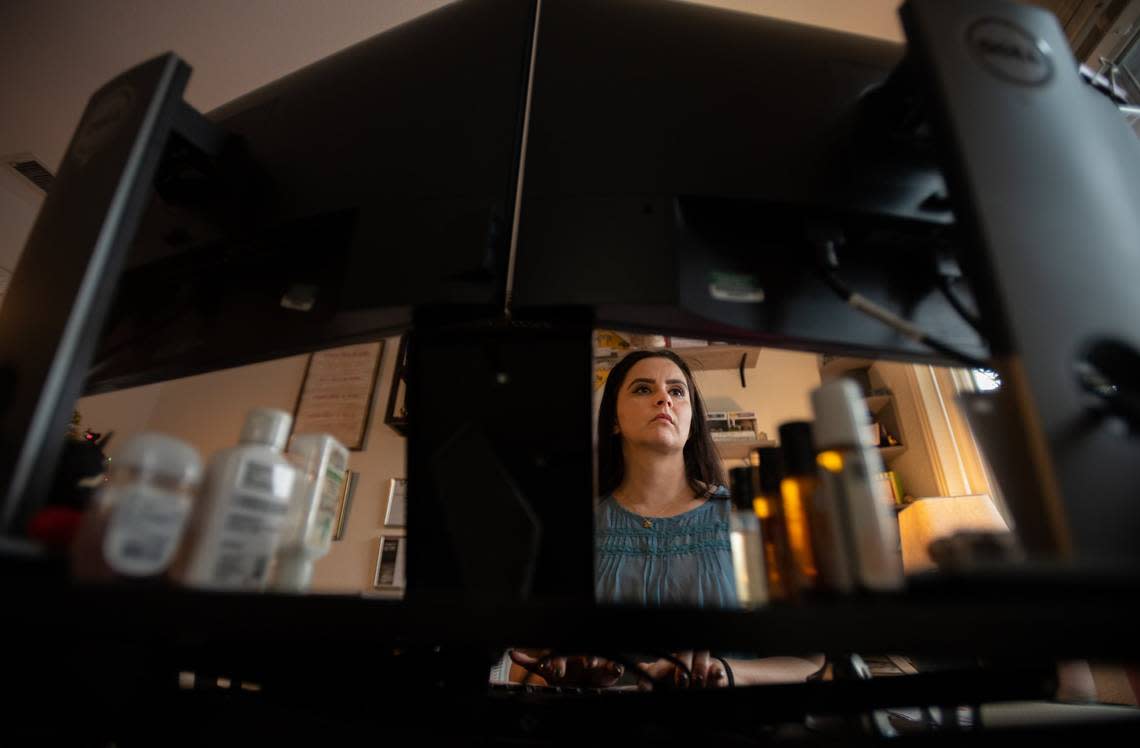He pioneered telework for state workers 40 years ago. What’s he think of return-to-office push?

Get The State Worker Bee newsletter in your inbox every Wednesday
This is a preview of our weekly state worker newsletter. Subscribers receive more exclusive tidbits like this one, as well as a weekly roundup of all our state worker coverage. Sign up using the form linked here, or by emailing mmiller@sacbee.com.
David Fleming advocated for telework way before the pandemic made it cool.
The former state employee piloted the first-ever telecommuting program for the state of California in 1985. Fleming argued that allowing employees to work from home would reduce the amount of office space needed to accommodate its rapidly growing workforce at the time. He also pointed out that cutting down commute times served the dual benefit of giving employees more flexibility and also improving air quality due to less traffic congestion.
The Legislature eventually codified telework in the 1990s as an official state policy. The law embraces Fleming’s assertions that telecommuting can be “an important means to reduce air pollution and traffic congestion” and also “stimulates employee productivity while giving workers more flexibility and control over their lives.”
“It is the intent of the Legislature to encourage state agencies to adopt policies that encourage telecommuting by state employees,” the law reads.
Now, after four years of widespread telework among state workers (and plenty of others), Fleming is puzzled as to why several state agencies and departments are calling workers back to the office two days a week. Several state employee unions and the vast majority of workers have voiced frustration with the mandates.
The Sacramento Bee spoke with Fleming this week to understand his perspective on the return-to-office orders that state workers are receiving. Below is an excerpt of the conversation, edited for clarity and length.
Q: What prompted you to lead the telecommuting pilot in the 1980s?
A: At the time I proposed this, I happened to be doing the forecasting for new office space for the state. Thirty or 40 years ago, the state employee population was increasing and they had to be housed somewhere in order to work. So we needed to continually plan and implement building propositions or leases.
And it occurred to me that we’re always supplying new space, so why don’t we find a way, using technology, to reduce that demand? Why don’t we control the demand by letting people work from their homes so they can eliminate the long commute? And by eliminating commutes, you also mitigate air quality and energy conservation.
Q: How did the pilot work?
A: I would first brief management in various state agencies at the time on what it’s all about. And if they elected to give it a try, I would then conduct some briefings and later training sessions for teleworkers and telemanagers. That way, I would give them a solid basis of what to expect and how to go about it.
Q: What did you learn from the pilot program?
A: I found out that most supervisors did not have a clear idea of what the expectations were for the employees. They didn’t talk about the quality of work, the quantity of work or how timely it should be. I’m thinking, “How can they possibly be supervising somebody if they don’t know these things or haven’t discussed them with the worker?”
And actually, people found that they became better supervisors and managers when they implemented this. They had to be more explicit about the expectations of their workers. There was no question about productivity. In most cases, I think they worried about not being able to contact them at a moment’s notice.
Q: What were the greatest challenges you had to overcome when advocating for telework?
A: The biggest problem I ran into was that some people felt like they were still in the “industrial age” mindset – that you have to watch people do their work. Like factory-type work where you have supervisors overseeing a big room of, let’s say, cubicles or a group of people. And that’s not true in the “information age”, as we’ve learned over the years. It’s overcoming that resistance to the way things are, overcoming change. It just so happens that the COVID epidemic sped up that process exponentially.
Management by objectives – or, let’s put it this way – management by results was a theme that we tried to push, push, push. Results are what count. Not observation of the person doing the work.
Q: Do you think a teleworker/telemanager training program similar to the one you used during the pilot could ease concerns about employee productivity?
A: Yes, and I did those trainings after the pilot for agencies that were interested in implementing telework. Asking the supervisors and managers, “Why do you fear this?” Is it because they don’t have trust in the employees? That’s one of the other things that was key – a trusting relationship between the teleworker and the telesupervisor. It has to be based on trust. And if there’s no trust, then you don’t have a good situation for telework, so you don’t do telework then.
Want state worker news in your inbox? Sign up for our weekly newsletter using the module below or by emailing mmiller@sacbee.com.

